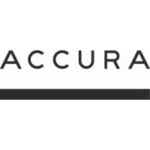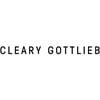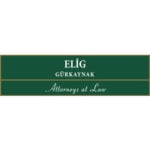-
What is the relevant legislative framework?
The Anti-Monopoly Law (“AML”), as amended in 2022, provides clear and detailed provisions for cartels (the definition of cartels in this article adopts the view that it includes both horizontal and vertical monopoly agreements, hereinafter referred to as “cartels”). The Provisions on Prohibition of Monopoly Agreements promulgated by the State Administration for Market Regulation (the “SAMR”) in March 2023 further refine the regulation rules for cartels. Besides, the Price Law, the Law on Tendering and Bidding and other laws are also applicable to certain special types of cartels. Prior to 2017, the Anti-Unfair Competition Law also contained provisions relating to cartels, but these provisions were deleted in the 2017 revision.
In addition to the above-mentioned laws and regulations, five anti-monopoly guidelines, namely Anti-Monopoly Guidelines for Automobile Industry, Anti-monopoly Guidelines for the Field of Intellectual Property Rights, Guidelines on the Application of the Leniency Program to Cases Involving Horizontal Monopoly Agreements, Guidelines on the Undertakings’ Commitments in Anti-Monopoly Cases, and Anti-Monopoly Guidelines on the Platform Economy were formulated by the Anti-Monopoly Commission of the State Council, and three anti-monopoly guidelines, namely Anti-monopoly Guidelines for Trade Associations , Anti-Monopoly Guidelines for the Pharmaceutical Sector, and Anti-Monopoly Compliance Guidance for Undertakings were formulated by the Anti-Monopoly and Anti-Unfair Competition Commission of the State Council (formerly known as the Anti-Monopoly Commission of the State Council). In addition, the SAMR issued the Anti-Monopoly Compliance Guidelines on Companies’ Overseas Operation and the Anti-Monopoly Guidelines on Standard Essential Patents. Additionally, at the local level, Beijing Municipality, Shanghai Municipality, Jiangsu Province, Tianjin Municipality, Hebei Province and Shandong Province, among others, have also released anti-monopoly compliance guidebooks. Although these anti-monopoly guidelines or guidebooks are not legally enforceable, the provisions on cartels contained therein have important reference value for the law enforcement agencies in their cartel enforcement practice and for undertakings in their compliance efforts.
-
To establish an infringement, does there need to have been an effect on the market?
Article 16 of the AML provides that “monopoly agreements refer to agreements, decisions or other concerted practices that eliminate or restrict competition”. Meanwhile, Articles 17 and 18 of the AML enumerate five typical types of horizontal monopoly agreements (including fixing or changing commodity prices, restricting the output or sales of a commodity, dividing a sales market or raw material procurement market, restricting the purchase of new technologies or equipment, or the development of new technologies or products, boycotting transactions) and two typical types of vertical monopoly agreements (including fixing resale price and restricting minimum resale price).
- Agreements other than the abovementioned typical monopoly agreements, would be deemed to be monopoly agreements and prohibited only if there is evidence to prove that the agreement eliminate or restrict competition.
- For the two typical vertical monopoly agreements, if an undertaking can prove that they do not have an effect of eliminating or restricting competition, they will not be prohibited.
- With respect to the five typical horizontal monopoly agreements, the relevant laws and regulations have not clarified whether they must have the effect of eliminating or restricting competition so as to constitute monopoly agreements. According to previous cases, AML enforcement authorities (AMEA) tend to consider that any of the above agreement causes damage to the market and are illegal per se, while allows an agreement to be exempted if it meets certain conditions presented in Article 20. In Contrast, the courts, in view of the definition of a monopoly agreement (cartels) in the AML, tend to analyze the illegality of cartels, i.e., whether it has the effect of eliminating or restricting the competition case by case.
-
Does the law apply to conduct that occurs outside the jurisdiction?
Article 2 of the AML stipulates jurisdiction over extraterritorial monopolistic conducts, provided that it eliminates or restricts the market competition within China. In the past decade, there have been a large number of cases showing that despite the conducts happened outside the territory of China, it is still subject to regulation by Chinese AMEA.
-
Which authorities can investigate cartels?
Before 2018, the National Development and Reform Commission (NDRC) and the State Administration for Industry and Commerce (SAIC) are in charge of price-related cartels and non-price-related cartels respectively. After the implementation of the Chinese government’s institutional reform in 2018, SAMR is responsible for AML enforcement.
In November 2021, China inaugurated the State Anti-Monopoly Bureau under the SAMR. Meanwhile, SAMR established three new departments for anti-monopoly enforcement, namely the Anti-Monopoly Enforcement Department I, the Anti-Monopoly Enforcement Department II and the Department of Competition Policy Coordination. Such institutional adjustment is an important effort to strengthen China’s anti-monopoly regulation and law enforcement. Among the three departments mentioned above, the Anti-Monopoly Enforcement Department I is in charge of anti-monopoly law enforcement against monopoly agreements.
At the local level, according to the Provisions on Prohibition of Monopoly Agreements, provincial Administrations for Market Regulation (the “provincial AMRs”) are authorized to take charge of the cartels enforcement work within their administrative regions. The Provisions on Prohibition of Monopoly Agreements also requires that the provincial AMRs file for record with the SAMR within 7 working days after a case is initiated. Before making decisions with regard to no administrative penalty, suspension of investigation, resumption of investigation, termination of investigation, or before issuing an advance notice of administrative penalty, provincial AMRs shall report to the SAMR. Provincial AMRs shall file the relevant documents to the SAMR for record within 7 working days after serving their decision of not to imposing an administrative penalty, suspending an investigation, resuming an investigation, terminating an investigation or decision on administrative penalty to undertakings under investigation. SAMR may entrust provincial AMRs to conduct case investigations. Similarly, provincial AMRs may also entrust other subordinate AMRs to conduct case investigations. The entrusted authorities can only conduct investigations in the name of the entrusting authority, and may not further entrust other administrative authorities, organizations or individuals to conduct investigations. Provincial AMRs may also consult other provincial AMRs to assist in the investigation as required.
-
How do authorities typically learn of the existence of a potential cartel and to what extent do they have discretion over the cases that they open?
(i) How do authorities typically learn of the existence of a potential cartel?
Generally, the market regulation authorities in China may discover the existence of a cartel and initiate antitrust enforcement ex officio or through various channels, such as whistleblower reports, referrals or assignments by higher-level authorities, transfers from other authorities, reports from lower-level authorities, or voluntary submissions by undertakings.
- Whistleblower reports. Reports from third parties such as enterprises, consumers, or insiders are an important source for detecting cartel conduct. According to Article 23 of the Provisions on Prohibition of Monopoly Agreements, if a report is submitted in writing with relevant facts and evidence, the antitrust enforcement authority shall conduct a necessary investigation. A written report shall generally include information about the whistleblower, the reported party, relevant facts and evidence of the suspected monopoly agreement, and a statement on whether the same matter has been reported to other administrative authorities or brought before a people’s court. Other forms of reporting, such as oral submissions, are also permitted.
- Ex officio investigations. These are less frequent and often triggered by incidental findings, with a focus on sectors under public scrutiny or those closely tied to people’s livelihoods. For example, according to published enforcement cases, an investigation in Chongqing was initiated based on television news reports.
- Referrals or assignments by higher-level authorities, transfers from other authorities, and reports from lower-level authorities. These are also common means of initiating investigations. For instance, in the case involving three pharmaceutical companies including Tianjin Tianyao Pharmaceutical Co., Ltd. that had reached and implemented a monopoly agreement, the case was assigned by the SAMR to the Tianjin Municipal Administration for Market Regulation. In another case in Zhejiang Province, involving 21 concrete companies in the Xiaoshan District of Hangzhou that had reached and implemented a monopoly agreement, the People’s Court of Yuhang District uncovered potential cartel conduct while adjudicating a gang-related case and referred the leads to the Zhejiang Administration for Market Regulation.
- Voluntary reports by undertakings. Under China’s leniency regime established by the Anti-Monopoly Law and related regulations, voluntary reporting by undertakings is also a possible channel for enforcement authorities to initiate investigations, although such cases are relatively rare in practice.
(ii) To what extent do authorities have discretion over the cases they open?
Except for investigations initiated ex officio, enforcement authorities generally have limited discretion in determining whether to open a case. Cases assigned by higher-level authorities, transferred by other authorities, or reported by lower-level authorities, especially those assigned by higher authorities, usually require investigation.
Additionally, for whistleblower reports, Article 23(1) of Provisions on Prohibition of Monopoly Agreements stipulates that if a report is submitted in writing along with relevant facts and evidence, the antitrust enforcement authority shall conduct a necessary investigation. Therefore, written reports with supporting facts and evidence must be investigated. In practice, considering the current enforcement philosophy of “responding to complaints upon receipt”, even reports made through oral or other non-written forms are often followed up with investigations by the enforcement authority.
-
What are the key steps in a cartel investigation?
The investigation of a cartel case mainly includes steps as finding clues, initiating a case, investigating, making preliminary conclusions, and making final conclusions.
Firstly, an AMEA searches for clues of the monopolistic conduct ex officio, through people’s reports, assignment by higher authorities or case transferring from other agencies. After necessary investigation, it will decide whether to initiate the case.
Secondly, the AMEA conducts investigations according to law, and the investigated parties have the obligation to cooperate with the investigation.
Thirdly, the AMEA makes a preliminary conclusion based on the evidence obtained from the investigation, and issues an Advance Notice of Administrative Penalty (Statement of Objection) to the investigated party. The investigated party has the right to state opinions, make defenses, and apply for a public hearing if necessary.
Lastly, after considering the facts of the case and the opinions of the investigated party, the AMEA makes a final punishment decision and issues an Administrative Punishment Decision (Final Decision) to the investigated party.
-
What are the key investigative powers that are available to the relevant authorities?
According to Article 47 of the AML, the AMEA have following investigative powers:
- conducting on-premise inspections of the place of business of the investigated undertakings or other relevant places;
- questioning the undertakings, interested parties or other relevant entities or individuals, and asking for information about the situation;
- inspecting and duplicating related documents, contracts, account books, business correspondences, electronic data and other relevant documents or materials of the undertakings, interested parties or other relevant entities or individuals under investigation;
- sealing up and detaining relevant evidence;
- enquiring bank accounts of the undertakings.
Although the AML does not specify, the AMEA may enter the business premises of business operators or other relevant places for unannounced inspections in accordance with subparagraph 1 of Article 47(1) AML. During the unannounced inspection, the AMEA also have the power to inspect and seized relevant evidence such as certificates, agreements, account books, business correspondences and electronic data (such as data in office computers, mobile communications, historical data on servers and access to the cloud).
Article 62 of the AML stipulates the legal liabilities of investigated parties for refusing to provide materials or information relevant to the investigation to the AMEA or providing false materials and information or otherwise refusing or obstructing the investigation of the AMEA by concealing, destroying or transferring evidence, etc. For a company, a fine of up to 1% of the sales of the previous year may be imposed; if there is no sales of the previous year or it is difficult to calculate the sales of the previous year, a fine of up to 5 million CNY may be imposed; for an individual, a fine of up to 500,000 CNY may be imposed. In addition, the AML also established a multiple penalties mechanism for investigated parties who refuse to cooperate with the anti-monopoly investigation. Under Article 63, for those who refuse to cooperate with the anti-monopoly investigation, if the violation is serious, and result an exceptional pernicious impact and exceptional grave consequences, the AMEA may impose a fine of not less than two times but not more than five times the amount of the fine prescribed in Article 62. Article 67 of the AML stipulates that “If a violation of this Law constitutes a crime, criminal liabilities shall be pursued in accordance with law.”
-
On what grounds can legal privilege be invoked to withhold the production of certain documents in the context of a request by the relevant authorities?
According to Article 50 of the AML The investigated party has a duty to cooperate with the AMEA, unless the AMEA have procedural defects in the investigation process, such as less than two law enforcement officers are presented, or the law enforcement officer cannot verify his identity. In addition, the investigated party may require registering and copying documents obtained by the AMEA. For some documents that are not suitable for submission, they have the right to submit legitimate copies or request the AMEA to return the pieces when necessary.
-
What are the conditions for a granting of full immunity? What evidence does the applicant need to provide? Is a formal admission required?
According to Article 37 and Article 47 of the Provisions on Prohibition of Monopoly Agreements, the conditions for a granting of full immunity are as follows: (1) is the first undertaking to apply for exemption from penalty; (2) voluntarily report the situation of the monopoly agreement to the AMEA; (3) provide material evidence. Material evidence refers to evidence which is not yet in the possession of the AMEA, and may play a key role in initiation of an investigation or determination of a monopoly agreement; and (4) does not play a leading role in reaching a monopoly agreement, coerce other undertakings to participate in reaching or implementing a monopoly agreement, or obstructs other undertakings from ceasing their illegal conduct.
As mentioned above, the evidence that the applicant need to provide is the material evidence, which is not yet in the possession of the AMEA, and may play a key role in initiation of an investigation or determination of a monopoly agreement.
According to Article 7 of the Guidelines on the Application of the Leniency Program to Cases Involving Horizontal Monopoly Agreements (the “Guidelines on Leniency”), if the first undertaking to apply for exemption from penalty submits a report and important evidence on the monopoly agreement to the AMEA, the AMEA shall issue a written receipt to the undertaking, specifying the time of receipt and a list of materials.
In addition, Paragraph 3 of Article 47 of the Provisions on Prohibition of Monopoly Agreements explicitly provides that leniency program is applicable for the personal liability of legal representatives, persons in charge and directly responsible persons, that is, if the legal representatives, persons in charge and directly responsible persons who are personally liable voluntarily report the relevant details of the monopoly agreement and provide important evidence to the AMEA, the penalties may be reduced by 50% or exempted from penalties by the AMEA.
-
What level of leniency, if any, is available to subsequent applicants and what are the eligibility conditions?
According to Paragraph 1 of Article 47 of the Provisions on Prohibition of Monopoly Agreements, for the second applicant, the penalty may be reduced by a margin of 30% to 50%; and for the third applicant, the penalty may be reduced by a margin of 20% to 30%. In addition, According to the Guidelines on Leniency, the penalty may be reduced by no more than 20% for subsequent applicants in the latter order of application.
According to Article 37 and Article 47 of the Provisions on Prohibition of Monopoly Agreements, the conditions for subsequent applicants are as follows: (1) voluntarily report the situation of the monopoly agreement to the AMEA; (2) provide material evidence; and (3) does not play a leading role in reaching a monopoly agreement, coerce other undertakings to participate in reaching or implementing a monopoly agreement, or obstructs other undertakings from ceasing their illegal conduct.
-
Are markers available and, if so, in what circumstances?
Article 7 of the Guidelines on Leniency has established a clear and transparent marker system:
- If the first undertaking to apply for exemption from penalty submits a report and important evidence on the monopoly agreement to the AMEA, the AMEA shall issue a written receipt to the undertaking, specifying the time of receipt and a list of materials.
- If the report submitted to the AMEA by the first undertaking to apply for exemption from penalty does not meet the requirements, the AMEA will not issue a written receipt.
- If the report submitted to the AMEA by the first undertaking to apply for exemption from penalty meets the requirements, but no evidence is provided or the evidence is incomplete, the AMEA may register and issue the written receipt in (1) above, and require the undertaking to supplement relevant evidence within the prescribed time limit. If the undertaking submits relevant evidence within the time limit required by the AMEA, the AMEA will regard the time it receives the report as the time of applying for leniency; if the undertaking fails to submit relevant evidence as required within the time limit, the AMEA will cancel its registration.
- After being disqualified from registration, the first undertaking who applied for exemption from penalty can still complete relevant evidence and apply to the AMEA for exemption as long as no other undertakings have applied for leniency; if other undertakings have applied for leniency before the first undertaking applies for exemption again, the disqualified undertaking can apply for mitigating the penalty.
- If the undertaking applying for the exemption from the penalty is disqualified from registration, the first undertaking who has applied for mitigating the penalty will automatically be adjusted to the applicant for the exemption from the penalty.
-
What is required of immunity/leniency applicants in terms of ongoing cooperation with the relevant authorities?
According to Article 10 of the Guidelines on Leniency, undertakings could obtain leniency only if they submit reports and evidence in accordance with the requirements from the guideline and meet all the following conditions: (1) ceasing the alleged violation immediately after applying for leniency, with the exception that the law enforcement authorities require the undertakings to continuously implement the aforesaid practice in order to ensure the smooth progress of the investigation. The undertakings who have applied for leniency to overseas law enforcement authorities and are required to continue to implement the aforesaid practice shall report to the law enforcement authorities; (2) cooperating with the law enforcement authorities in investigation in a prompt, sustainable, comprehensive and sincere manner; (3) preserving and providing the evidence and information properly and avoiding to conceal, destroy or transfer evidence or provide false materials or information; (4) not disclosing their application without the approval of the law enforcement authorities; and (5) not conducting any other practice that affects the anti-monopoly law enforcement investigation.
-
Does the grant of immunity/leniency extend to immunity from criminal prosecution (if any) for current/former employees and directors?
As of today, there is no individual criminal exemption for cartels. The AML does not provide for criminal liability for cartels (whether for individuals or undertakings), but only provides in Article 67 that if a violation of AML constitutes a crime, criminal liability shall be pursued in accordance with law. The Criminal Law only provides for the offence of collusive tendering in relation to cartels. In the future, China will probably establish criminal liability for cartels other than collusive tendering. However, whether such criminal liability is subject to the aforementioned leniency or exemption system is still to be clarified by corresponding provisions.
-
Is there an ‘amnesty plus’ programme available in respect of evidence provided to prove additional infringements?
According to relevant law and previous cases, there is no ‘amnesty plus’ programme.
-
Does the investigating authority have the ability to enter into a settlement agreement or plea bargain and, if so, what is the process for doing so?
In China, there is no settlement or plea-bargaining system equivalent to those in the European Union and the United States. However, under the PRC law, the AMEA may suspend the investigation upon acceptance of commitments of the undertaking under investigation, and may terminate the investigation after the undertaking fulfilled the commitments.
Article 53 of the AML provided the legal basis for the AMEA to accept commitments made by companies. In addition, it should be noted that although it may be applied to both monopoly agreements and abuse of dominant market position, the commitment system, in fact, is mainly used in cases of abuse of dominant market position. The Guidelines on the Undertakings’ Commitments in Anti-Monopoly Cases (“Guidelines on Commitments”) provides that in cases of horizontal monopoly agreements to fix or change prices, to limit the number of goods produced or sold, or divide sales markets or the raw material procurement markets, the AMEA shall not accept commitments.
To date, the vast majority of measures committed are behavioural measures, while it cannot be ruled out that the AMEA may require the structural measures to be committed in the future. The Guidelines on Commitments stipulates that ‘the measures committed by undertakings can be behavioural, structural or a hybrid of the two. Behavioural measures include adjusting pricing strategies, cancelling or changing various transaction restrictions and opening up infrastructure such as networks or platforms, licensing patents, technical secrets or other intellectual property rights. Structural measures include divesting tangible assets, intangible assets including intellectual property rights, or related rights and interests.’
Finally, the decisions of suspension and termination of investigation do not require approvals from courts. Accordingly, the said decisions may not prevent other undertakings or consumers from filing civil suits against the suspected monopoly conducts, and should not serve as evidence to demonstrate whether monopoly conducts exist. This is also stipulated in Article 3 of the Guidelines on Commitments.
-
What are the key pros and cons for a party that is considering entering into settlement?
The benefits for undertakings to voluntarily make commitments to the AMEA include:
- Avoiding administrative penalties: the decision on suspension of investigation is not an administrative penalty decision. The undertaking under investigation can therefore temporarily avoid the economic penalty under Articles 56 and 63 of the AML. If the undertaking fulfills its commitments, the AMEA may decide to terminate the investigation, and the undertaking will thus avoid administrative penalty in full.
- Ending the investigation procedure as quickly as possible: in cases where monopolistic conducts exist or where such conducts cause harmful consequence, commitments made by the undertaking may suspend and terminate the investigation procedure soon, so as to reduce the uncertainty and avoid the continuous impact on the operation and management of the undertaking, or reduce effects on its contemplating mergers and acquisitions or capital market operation.
- Tailoring to undertakings’ own capabilities: the committed measures are proposed by the undertaking itself according to its own conditions, which would be more practicable.
Depending on the circumstances of individual cases, possible disadvantages may include the followings.
- The application for suspension of investigation and the decision to suspend the investigation shall set forth the facts of suspected monopoly conducts and the possible effects thereof. Notwithstanding Article 3 of the Guidelines on Commitment intends to clarify that none of the decisions to suspend investigation or decisions to terminate investigation serves as the determination on whether or not the conducts of undertaking constitute monopolistic conducts or as evidence for making such a determination. However, the commitment, in which the undertaking admits the existence of suspected monopoly conducts, may trigger or inspire other undertakings or consumers to file a civil lawsuit.
- The AMEA’s acceptance of the commitments and decisions to suspend and terminate the investigation does not serve as the determination on whether or not the conducts of undertaking constitute monopolistic conducts. The AMEA may conduct investigations against other similar conducts of the said undertakings and impose administrative penalties according to law.
- The application for suspending the investigation is voluntarily submitted by the undertaking. Therefore, the undertaking cannot apply for administrative reconsideration or file administrative litigation against the specific measures it proposed in the application and committed thereafter.
- The decision to suspend the investigation, including the contents of the commitment, will be made public. The undertaking will thus be subject to public supervision in addition to the supervision of the AMEA.
-
What is the nature and extent of any cooperation with other investigating authorities, including from other jurisdictions?
1. Cooperation between domestic administrative agencies
Firstly, at the level of law enforcement, other government agencies which find clues or receive materials about suspected monopoly conducts should transfer the clues or materials to the AMEA, and evidence and materials collected by these agencies can be used by the AMEA as evidence. For example, in the monopoly agreement case of motor vehicle testing companies in Shuozhou in 2022, the case clues were discovered by the Shuozhou Municipal Public Security Bureau and transferred to the Shuozhou Municipal AMR, which then transferred the case to the Shanxi Provincial AMR.
Secondly, during investigations, the AMEA may seek opinions from relevant authorities in charge of the industry concerned, such as the Ministry of Industry and Information Technology, the Ministry of Transportation, the People’s Bank of China, China National Intellectual Property Administration, China Banking and Insurance Regulatory Commission.
2. Cooperation with investigating authorities from other jurisdictions
Since the entry into force of the AML in 2008, China has entered into more than 50 cooperation agreements or memorandums of understanding with competition regulatory authorities of more than 30 countries and regions, including the US, the EU, Singapore, Russia. For example, on December 29, 2021, China and Singapore signed the Memorandum of Understanding regarding Understanding and Cooperation in the Field of Competition Law; On December 19, 2023, the Minister of the SAMR and the Head of the Federal Anti-monopoly Service of the Russian Federation jointly signed the Memorandum of Understanding for 2024-2025 between the SAMR of the People’s Republic of China and the Federal Anti-monopoly Service of the Russian Federation. On June 7, 2024, the Minister of the SAMR and Pakistan’s Ambassador to China signed a Memorandum of Understanding on Antitrust Cooperation between the two countries.
Article 2 of the AML stipulates that “this Law shall apply to monopolistic acts outside the People’s Republic of China that have the effect of eliminating or restricting competition in the domestic market.” The investigation and penalties imposed by the AMEA are independent from foreign authorities. An undertaking who has submitted leniency applications or reached settlement agreements outside China would not automatically be exempted from investigations or punishment in China. It should submit leniency applications or propose to make commitments to the AMEA separately.
-
What are the potential civil and criminal sanctions if cartel activity is established? How often are civil sanctions and/ or criminal penalties imposed in practice following a finding of an infringement?
Firstly, according to Article 56 of the AML, the administrative penalties imposed on cartelists under the AML include ① confiscation of illegal gains, and ② administrative fines. This is shown in the table below.
Conclusion and Implementation of Monopoly Agreements Confiscation of illegal gains; a fine ranging from 1% to 10% of the sales of the previous year; in the absence of sales in the previous year, a fine no more than 5 million CNY In the case of a particularly grave violation of the AML with an exceptional pernicious impact and exceptional grave consequences, a fine no less than two times but no more than five times of the amount of the fine specified on the left may be imposed. Reached but not yet implemented monopoly agreements No more than 3 million CNY Individuals liable (legal representative, person in charge and directly responsible persons) for reaching monopoly agreements No more than 1 million CNY The undertaking organize other undertakings to reach monopoly agreements or provide substantive assistance for other undertaking to reach monopoly agreements Application of the aforesaid provision Secondly, on the criminal liability of cartels, monopoly agreements which are reached through collusion bidding are also subject to sanctions under the Law on Tendering and Bidding and the Criminal Law. Specifically, according to Article 53 of the Law on Tendering and Bidding, the collusion bidder shall be fined not less than 0.5% but not more than 1% of the value of the bid it won, and the persons who are directly in charge and other persons who are directly responsible shall be fined not less than 5% but not more than 10% of the fine imposed on the bidder. In serious situations, the bidder may be disqualified from bidding for a project subject to bidding as required by law for one to two years and the disqualification shall be announced, or the business license of the entity may be revoked by the AIC. Further, according to Articles 223 and 231 of the Criminal Law, where (i) bidders act in collusion with each other in offering bidding prices and thus jeopardize the interests of bid-inviters or of other bidders, and the circumstances are serious or (ii) bidder and bid-inviter act in collusion with each other in bidding and thus jeopardize the lawful interests of the State, the collective or citizens, the bidders (and bid-inviters) shall be sentenced to fixed-term imprisonment of not more than three years or criminal detention and shall also, or shall only, be fined. Where the offence is committed by an entity, the entity shall be sentenced to a fine and the person in charge and other persons directly responsible for the offence shall be punished in accordance with the foregoing provisions.
Lastly, on the civil liability of cartels, Article 60 of the AML provides that “where an undertaking implementing any monopolistic act causes any loss to others, it shall assume the civil liability in accordance with the law; where an undertaking implementing any monopolistic act damages the public interests of society, the People’s Procuratorate at or above the level of cities with subordinate districts may institute civil public interest litigation at the People’s Court in accordance with the law.” Therefore, the parties who suffer losses due to the cartel may request the cartelists to assume the corresponding civil liability; the People’s Procuratorate at or above the level of level of cities with subordinate districts may institute civil public interest litigation where the cartel harms the public interest of society.
In practice, if an undertaking is found to have implemented a cartel, the AMEA will impose administrative penalties on the undertaking. Additionally, if the cartel causes losses to others, the undertaking shall bear civil liability in accordance with the law.
From the perspective of administrative penalties, in practice, if an undertaking is found to have implemented a cartel, it is highly likely that the AMEA will impose administrative penalties on the undertaking. Specifically, for the cartel conducts expressly listed under Article 17 (horizontal monopoly agreements) and Article 18 (vertical monopoly agreements) of the AML (excluding the catch-all clauses), the AMEA only needs to prove that the undertaking has implemented such cartel conducts to impose penalties, without the need to demonstrate that the agreement has the effect of eliminating or restricting competition. However, for the catch-all clauses under Article 17 and Article 18 of the AML, the AMEA must also prove that the agreement has the effect of eliminating or restricting competition before imposing a penalty. In terms of the severity of administrative penalties, the AML implements a dual penalty system, imposing penalties on both the undertaking and the legal representative, principal person in charge, and directly responsible personnel of the undertaking who are personally responsible for the conclusion of the monopoly agreement. On March 21, 2025, the Shanghai Market Supervision and Administration Bureau announced the administrative penalty decision on a case of horizontal monopoly agreement among three pharmaceutical companies, which was the first cartel case in China to hold individuals accountable for concluding a monopoly agreement.
From the perspective of civil liability, in judicial practice, the plaintiff’s claims usually involve damages suffered due to the undertaking’s implementation of a cartel and a request for the undertaking to bear civil liability (usually compensation for losses). Regarding the burden of proof, for the cartel conducts expressly listed under Article 17 (horizontal monopoly agreements) and Article 18 (vertical monopoly agreements) of the AML (excluding the catch-all clauses), plaintiffs are no longer required to prove that such conduct has the effect of eliminating or restricting competition. However, the plaintiff still needs to prove the following three elements: (1) the undertaking has implemented a cartel, (2) the plaintiff has suffered losses due to the cartel, and (3) there is a causal relationship between the plaintiff’s losses and the cartel. If the plaintiff fails to meet the burden of proof, it will face adverse consequences of failing to prove. For the catch-all clauses under Article 17 and Article 18 of the AML, in addition to the above three elements, the plaintiff is also required to prove that the cartel conduct had the effect of eliminating or restricting competition.
-
What factors are taken into account when the fine is set? Does the existence of an effective corporate compliance strategy impact the determination of the fine? In practice, what is the maximum level of fines that has been imposed in the case of recent domestic and international cartels?
As mentioned above, whether the monopoly agreement has been implemented would significantly impact the amount of fines. According to Article 56 of the AML, if the monopoly agreement has been implemented, the undertaking involved in shall be fined not less than 1% but not more than 10% of its sales in the previous year, and under the circumstance where the undertaking had no sales in the previous year, the fine shall be no more than 5,000,000 CNY. On the other hand, if such monopoly agreement has not been implemented, the undertaking involved in shall be fined not more than 3,000,000 CNY.
Meanwhile, according to Article 59 of the AML, to determine the specific amount of the fine, the factors to be considered by the AMEA in determining the amount of fines include the nature, extent and duration of the violation, the status of the elimination of the consequences of the violation, etc.
For foreign undertakings, the highest percentage of sales revenue that has been imposed as fine for implementation of a horizontal monopoly agreement is 9%, in a case where eight international ro-ro cargo shipping companies implemented a monopoly agreement by collusion bidding in 2015. Considering, inter alia, that the monopoly agreement lasted for a long time (no less than four years), and leading to a wide range of influence (covering various main ship routes including North America-China, Europe-China and South America-China), NDRC imposed fines ranging from 4% to 9% of the sales of international shipping services of ro-ro cargo related to the Chinese market in 2014, amounting to 407 million CNY in total, on 8 foreign companies, such as Mitsui O.S.K. Lines, Ltd., Vic Co., Ltd., and Chile South American Steamship Co., Ltd.
While in vertical monopoly agreement cases, no foreign undertakings were directly subject to administrative penalties. Instead, penalties were only imposed on the subsidiaries of foreign undertakings in China, such as Medtronic (Shanghai) Investment Management Co., Ltd., Eastman (China) Investment Management Co., Ltd., Geistlich Trading (Beijing) Co., Ltd and Straumann (Beijing) Medical Device Trading Co., Ltd., and the base for the aforesaid administrative fine was the sales revenue of these subsidiaries within China, rather than worldwide.
For domestic undertakings, the highest percentage of sales revenue that has been imposed as fine for implementation of a horizontal monopoly agreement is 10%. In addition, in the price fixing case of Mercedes-benz in Jiangsu Province in 2015, Beijing Mercedes-Benz Sales & Service Co., Ltd., Mercedes-Benz (China) Automobile Sale Co., Ltd. and Beijing Benz Automobile Co., Ltd. were fined 7% of their sales revenue of the previous year, which is the highest percentage of sales revenue that has been imposed as fine for implementation of a vertical monopoly agreement.
-
Are parent companies presumed to be jointly and severally liable with an infringing subsidiary?
No existing law explicitly requires parent companies to bear joint liability for their subsidiaries’ monopolistic practice. In practice, in the Yangtze River Pharmaceutical Group case in 2021, the decision on administrative penalty mentioned that the Yangtze River Pharmaceutical Group Co., Ltd. was the core and center of the Yangtze River Pharmaceutical Group (the Yangtze River Pharmaceutical Group Co., Ltd. together with its subsidiaries), and acted as the decision-maker, implementer and supervisor in the conclusion and implementation of the monopoly agreement. The pharmaceutical manufacturing and sales subsidiaries of the Yangtze River Pharmaceutical Group Co., Ltd. participated in the monopolistic practice to varying degrees, followed the unified leadership and deployment of the Yangtze River Pharmaceutical Group Co., Ltd. with respect to the decision-making and implementation of the monopolistic practice, without their independent will. […] The above significantly showed that the will of the subsidiaries participating in the monopolistic practice has the nature of subordination. Therefore, the AMEA identified the parent company as the party that committed the violation, and regarded the subsidiaries’ monopolistic practice as the practice of the parent company. This shows that if the AMEA has evidence to prove the parent company participates in the relevant monopolistic practice and has decisive influence on the aforesaid monopolistic practice, the parent company will be held liable, and the sales revenue of the parent company will be used as the base amount of fines for calculation.
-
Are private actions and/or class actions available for infringement of the cartel rules?
It is provided in Paragraph 1 of Article 60 of the AML that the undertakings which commit cartels and cause losses to others shall bear civil liability according to law. In addition, Pursuant to Article 1 of the Interpretation of the Supreme People’s Court on Several Issues Concerning the Application of Law in the Trial of Civil Disputes over Monopoly (the “Judicial Interpretation Concerning Monopoly Disputes”), which came into effect on July 1, 2024, natural persons, legal persons, or unincorporated organizations that have suffered losses due to monopolistic practices, as well as those that have disputes arising from the content of contracts or the articles of association, resolutions, decisions, or similar documents of business operators’ groups that violate the AML, are entitled to initiate civil actions in the people’s courts in accordance with the AML.
The Representative Action System of China stipulated in the Civil Procedure Law of China is relatively similar to the class action system in the United States of American and other judicial jurisdictions. However, there are great differences between the two systems in terms of the appointment and scope of authority of the litigation representative, and whether or not the judgment rendered by courts is binding on all parties concerned.
According to the Civil Procedure Law of China, institutions and relevant organizations designated by law may initiate legal actions in court against acts that jeopardizing public interest such as causing environmental pollution, or infringing upon customers’ legitimate rights. In particular, the Law on the Protection of the Rights and Interests of Consumers provides that China Consumers Association and its branches at provincial level may file a lawsuit at court against conducts that harm mass consumers’ legitimate interests and rights. Besides, Paragraph 2 of Article 60 of the AML provides that where a monopolistic practice carried out by an undertaking infringes the public interest of the society, the People’s Procuratorate at or above the level of cities with subordinate districts may file a civil public interest lawsuit in the people’s court pursuant to the law.
In 2024, Chinese People’s Procuratorates filed 16 anti-monopoly civil public interest lawsuits.
-
What type of damages can be recovered by claimants and how are they quantified?
According to Paragraph 1 of Article 60 of the AML, the undertakings which commit cartels and cause losses to others shall bear civil liability according to law. According to Article 43 of the Judicial Interpretation Concerning Monopoly Disputes, where a defendant commits monopoly conducts and causes losses to the plaintiff, the court may, in light of the plaintiff’s claims and the ascertained facts, order the defendant to bear civil liabilities, including ceasing the infringement and compensating for losses. If ordering the defendant to cease the alleged monopolistic practices remains insufficient to eliminate the effects of excluding or restricting competition, the people’s court may, based on the plaintiff’s claims and the specific circumstances of the case, order the defendant to undertake necessary actions to restore competition. The AML formulates a compensatory compensation system. No law nor regulation empowers the infringed party with statutory rights to claim beyond its actual damage.
According to Article 45 of the Judicial Interpretation Concerning Monopoly Disputes, courts may include the reasonable costs arising from investigation and prevention of monopoly conducts in the scope of compensation. For example, in a dispute over vertical monopoly agreement between Beijing Ruibang Yonghe Technology & Trade Co., Ltd. (Rui Bang) and Johnson & Johnson Medical (China) Co., Ltd. (Johnson & Johnson) in 2013, the court of appeal held that Johnson & Johnson should compensate Rui Bang for the economic losses that had direct causal link to the monopoly agreement. In a contractual dispute and horizontal monopoly agreement dispute between Yan ‘an Jiacheng Concrete Co., Ltd. (hereinafter referred to as “Jiacheng”) and Fujian Sanjian Engineering Co., Ltd. (hereinafter referred to as “Sanjian”) in 2022, since ten concrete companies in Baota District, Yan’ an City of Shaanxi Province (including Jiacheng) reached and implemented a horizontal monopoly agreement in respect of raising price of concrete, Sanjian, which bought concrete provided by Jiacheng, filed a lawsuit with the court to claim compensation for its losses. The court held that if the price increase agreement reached by the undertakings has caused damage to the trading counterparties, they shall bear the corresponding civil liability. With regard to goods that are difficult to obtain outside the local market, or that are highly depend on technical support, the damage caused by the horizontal monopoly agreement shall be calculated as the difference between the price fixed by the monopoly agreement and the price previously agreed between parties in free market.
-
On what grounds can a decision of the relevant authority be appealed?
According to Article 65 of the AML, where a party is dissatisfied with the administrative penalty decision made by the AMEA concerning monopoly agreement, such party may apply for administrative reconsideration or file administrative litigation.
Moreover, Article 77 of the Administrative Litigation Law of the People’s Republic of China (the “ALLC”) provides that if an administrative penalty is “obviously inappropriate”, or if there are errors in determining or calculating the amount involved in other administrative acts, the court may rule to modify the decision.
-
What is the process for filing an appeal?
The party could submit the administrative reconsideration application regarding the penalty decision made by the AMEA in respect of the monopoly agreement within 60 days from the date of receipt of the administrative penalty decision. The administrative reconsideration authority shall render its decisions within 60 days after accepting such application. The period of reviewing the application could be extended up to 30 days upon approval. The party still enjoy the right to file an administrative litigation if such party is unsatisfied with the decision made by administrative reconsideration authority.
At present, the AMEA for monopoly agreement cases is the SAMR and the provincial AMRs. The provincial AMRs is responsible for the anti-monopoly law enforcement within its administrative regions and cases authorized by the SAMR. If the administrative penalty decision is made by SAMR, and the party is unsatisfied with such decision, the application for administrative reconsideration shall be submitted to SAMR, which shall act as the administrative reconsideration authority. If the administrative penalty decision is made by provincial AMRs, and the party is unsatisfied with such decision, the application for administrative reconsideration may be submitted to the provincial people’s government or to SAMR, subject to the discretion of the applicant.
In 2016, Shaanxi Provincial Price Bureau made administrative penalties to the Shaanxi Vehicle Inspection Association and more than 30 vehicle inspection agencies for concluding and implementing price monopoly agreements. Some of the agencies challenged the decision by submitting application for administrative reconsideration to Shaanxi provincial’s people’s government. The administrative reconsideration authority review the case and upheld the original administrative penalty decisions.
In addition, the party could file an administrative suit before the competent court against the penalty decision rendered by the AMEA in respect of the monopoly agreement within six months from the date of receipt of the administrative penalty decision.. If the party apply for administrative reconsideration at first and disagrees with the administrative reconsideration decision, the party may file a suit in court within 15 days after receiving the reconsideration decision. In case where the administrative reconsideration authority upholds the original administrative penalty decision, the party may bring a lawsuit against the AMEA making the previous penalty decision concerning the monopoly agreement and the administrative reconsideration authority as co-defendants.
When applying ordinary procedures to hear an administrative case at first instance, the court shall make judgment within six months after the case is filed. If the time limit for trial needs to be extended under special circumstances, the extension shall be approved by the high people’s court; if the high people’s court needs to extend the time limit for trial of an administrative case of first instance, the extension shall be approved by the Supreme People’s Court. If the summary procedure is applied to an administrative case of first instance, the court shall conclude the case within 45 days of the date of filing the case. The time limit for trial through summary procedure shall not be extended.
In order to challenge the judgment rendered by the court of the first instance, the party shall appeal to the upper level court within 15 days after receiving the judgment; and the time limit for appealing to the upper level court against a first instance verdict shall be 10 days after receiving the verdict. According to the Provisions of the Supreme People’s Court on Several Issues concerning the Intellectual Property Tribunal, appeals filed against the judgments of first-instance civil cases concerning monopoly and first-instance administrative cases involving administrative penalties imposed on monopoly shall be heard by the Intellectual Property Tribunal of the Supreme People’s Court. When hearing administrative appeal cases, the court shall make final judgment within three months after receiving the appeal. If there are special circumstances that require an extension of the time limit, the extension procedure shall be the same as the first instance.
-
What are some recent notable cartel cases (limited to one or two key examples, with a very short summary of the facts, decision and sanctions/level of fine)?
One of the recent notable case of horizontal monopoly agreements is the first case in China which AMEA imposed penalty on individual. On March 19, 2025, the Shanghai AMR made a penalty decision on Shanghai Xinyi United Medicine & Pharmaceutical Co., Ltd. (“Xinyi Med&Pharm”) , Henan Runhong Pharmaceutical Co., Ltd.(“Runhong Pharm”), Chengdu Huixin Pharmaceutical Co., Ltd.(“Huixin Pharm”) and responsible individual Guo Suning(“Guo”) for reaching and implementing a monopoly agreement of fixing or changing the price of goods, dividing the sales market, confiscating the illegal gains of Xinyi Med&Pharm, Runhong Pharm and Huixin Pharm of 115,471,142.40 CNY, 15,174,313.07 CNY and 10,631,753.85 CNY respectively, and imposing a fine of 50,335,849.29 CNY on Xinyi Med&Pharm after a deduction of 80% regarding to 2% of its 2023 sales, a fine of 27,540,836.48 CNY on Runhong Pharm, a fine of 3,843,871.13 CNY on Huixin Pharm regarding to 4% of their 2023 sales separately and a fine of half million CNY on Guo. According to the penalty decision, the three companies were found to have reached and implemented a horizontal monopoly agreement to fix or change the price of commodities and divide the sales market. These acts violated the provisions of Article 17 (1) and (3) of the AML. In this case, Guo represented Xinyi Med&Pharm in continuous communication with Runhong Pharm and Huixin Pharm, negotiating and implementing the monopoly agreement, and promoted the implementation of the monopoly agreement.
-
What are the key recent trends (e.g. in terms of fines, sectors under investigation, any novel areas of investigation, applications for leniency, approach to settlement, number of appeals, impact of hybrid working in enforcement practice – e.g. dawn raids of domestic premises, ‘hybrid’ in-person/virtual dawn raids, access to personal devices, etc.)??
- Overview of 2024 Monopoly Agreement Cases
In 2024, the official website of the SAMR published 8 cases in which AMEA imposed penalties against monopoly agreements. The details are shown in the table below:
- Horizontal monopoly agreement cases: 8 in total
Type of horizontal monopoly agreements involved Fixing or changing prices of goods, limiting the quantity of goods produced or sold, dividing the sales market or raw material procurement market, and boycotting Punishment authority No case was investigated by the SAMR, all cases were investigated by provincial AMRs. Industry involved Cars(4 cases), building materials (2 cases), real estate(1 case), energy (1 case). Penalty involved Penalty percentage: 1% -6% Confiscation of illegal gains involved Confiscation of illegal gains imposed: 1cases - Vertical agreement cases: 0
- Suspension or Termination of Investigation in 2024 Monopoly Agreement Cases
The above monopoly agreement cases were all closed with penalties, and no cases were suspended or terminated. According to the AML, the law enforcement agencies may decide to terminate the investigation if a business operator undertakes to adopt specific measures to eliminate the consequences of its act within the time limit and the law enforcement agencies may decide to terminate the investigation if the business operator performs its undertaking. However, there is no requirement on law enforcement agencies to publish the decision of suspending or terminating the investigation. Therefore, subject to the limitation of incomplete publicity, the data may be incomplete.
- Application for Leniency Program in 2024 Monopoly Agreement Cases
In the case of monopoly agreement reached and implemented by 5 companies including Xinjiang Western Jinke Building Materials. Co., Ltd. (“Jinke”), the law enforcement agency applied the leniency system. The fines and confiscation of illegal income of Jinke, the first party who took the initiative to report the relevant situation of reaching monopoly agreements to the law enforcement agency about and provided important evidence, were imposed at a mitigated rate of 80%.
In the case of monopoly agreement reached and implemented by 10 companies including Tianjin Jinbei Motor Vehicle Inspection Service Co., Ltd. (“Jinbei”) and Tianjin Lanhai Motor Vehicle Inspection Servic Co., Ltd.(“Lanhai”), etc., the law enforcement agency applied the leniency system. The fines and confiscation of illegal income of Jinbei, the first party who took the initiative to report the relevant situation of reaching monopoly agreements to the law enforcement agency and provided important evidence, were imposed at a mitigated rate of 100%. Besides, the fines and confiscation of illegal income of Lanhai, the second party who took the initiative to report the relevant situation of reaching monopoly agreements to the law enforcement agency and provided important evidence, were imposed at a mitigated rate of 50%.
- Key Industries of Monopoly Agreement Enforcement: People’s Livelihood
In 2024, AMEA promoted special anti-monopoly enforcement actions in the livelihood sector and investigated and dealt with 11 cases of monopoly agreements and abuse of dominant market position. In the field of pharmaceuticals, the Anti-Monopoly Guidelines on Pharmaceuticals was formulated and AMEA penalized the responsible individuals for the first time in 2025 in the case of horizontal monopoly agreement between Shanghai Xinyi United Medicine & Pharmaceutical Co., Ltd. and other two companies.
-
What are the key expected developments over the next 12 months (e.g. imminent statutory changes, procedural changes, upcoming decisions, etc.)?
- In Administrative Law Enforcement
On January 23, 2025, the SAMR released an overview of antitrust enforcement by market regulators in 2024, which mentioned that the livelihood sector is always the focus of antitrust enforcement. Regarding the people’s livelihood part, the areas of concern include medicines, water, electricity, gas and heat, motor vehicle driving school and other parts that are closely related to people’s livelihood. At the same time, AMEA have also launched special anti-monopoly enforcement activities for 2025 in the livelihood sector. in 2025, livelihood-related areas, especially pharmaceuticals and public utilities, will still be the focus of antimonopoly enforcement.
- In Judicial Practice
On June 24, 2024, the Supreme People’s Court of China released the Judicial Interpretation Concerning Monopoly Disputes, including rules that reasonably reduce the plaintiff’s burden of proof. In light of this, it is expected that more companies and individuals will bring anti-monopoly actions to the court independently or following administrative sanctions in the future.
We expect that, in 2025, greater emphasis will be placed on anti-monopoly litigation, which will produce a number of guiding cases. Therefore, it is recommended that undertakings pay attention to cartel-related antitrust litigation and extract key points of antitrust compliance from them. This will not only help undertakings improve their antitrust compliance work, but also help undertakings enhance their awareness and ability to protect their legitimate rights and interests with the AML.
China: Cartels
This country-specific Q&A provides an overview of Cartels laws and regulations applicable in China.
-
What is the relevant legislative framework?
-
To establish an infringement, does there need to have been an effect on the market?
-
Does the law apply to conduct that occurs outside the jurisdiction?
-
Which authorities can investigate cartels?
-
How do authorities typically learn of the existence of a potential cartel and to what extent do they have discretion over the cases that they open?
-
What are the key steps in a cartel investigation?
-
What are the key investigative powers that are available to the relevant authorities?
-
On what grounds can legal privilege be invoked to withhold the production of certain documents in the context of a request by the relevant authorities?
-
What are the conditions for a granting of full immunity? What evidence does the applicant need to provide? Is a formal admission required?
-
What level of leniency, if any, is available to subsequent applicants and what are the eligibility conditions?
-
Are markers available and, if so, in what circumstances?
-
What is required of immunity/leniency applicants in terms of ongoing cooperation with the relevant authorities?
-
Does the grant of immunity/leniency extend to immunity from criminal prosecution (if any) for current/former employees and directors?
-
Is there an ‘amnesty plus’ programme available in respect of evidence provided to prove additional infringements?
-
Does the investigating authority have the ability to enter into a settlement agreement or plea bargain and, if so, what is the process for doing so?
-
What are the key pros and cons for a party that is considering entering into settlement?
-
What is the nature and extent of any cooperation with other investigating authorities, including from other jurisdictions?
-
What are the potential civil and criminal sanctions if cartel activity is established? How often are civil sanctions and/ or criminal penalties imposed in practice following a finding of an infringement?
-
What factors are taken into account when the fine is set? Does the existence of an effective corporate compliance strategy impact the determination of the fine? In practice, what is the maximum level of fines that has been imposed in the case of recent domestic and international cartels?
-
Are parent companies presumed to be jointly and severally liable with an infringing subsidiary?
-
Are private actions and/or class actions available for infringement of the cartel rules?
-
What type of damages can be recovered by claimants and how are they quantified?
-
On what grounds can a decision of the relevant authority be appealed?
-
What is the process for filing an appeal?
-
What are some recent notable cartel cases (limited to one or two key examples, with a very short summary of the facts, decision and sanctions/level of fine)?
-
What are the key recent trends (e.g. in terms of fines, sectors under investigation, any novel areas of investigation, applications for leniency, approach to settlement, number of appeals, impact of hybrid working in enforcement practice – e.g. dawn raids of domestic premises, ‘hybrid’ in-person/virtual dawn raids, access to personal devices, etc.)??
-
What are the key expected developments over the next 12 months (e.g. imminent statutory changes, procedural changes, upcoming decisions, etc.)?













